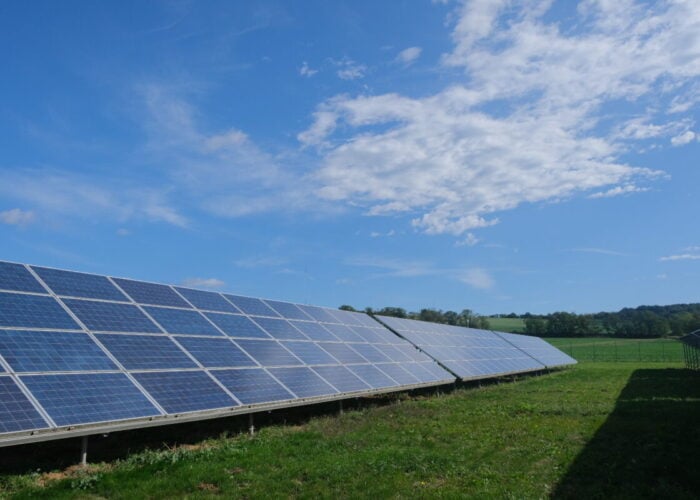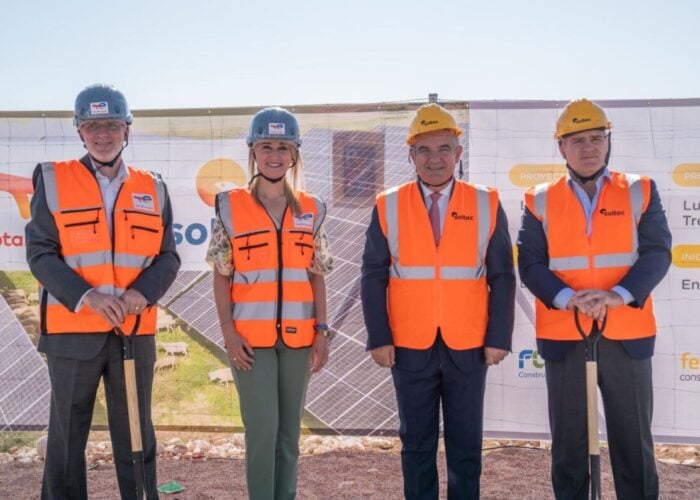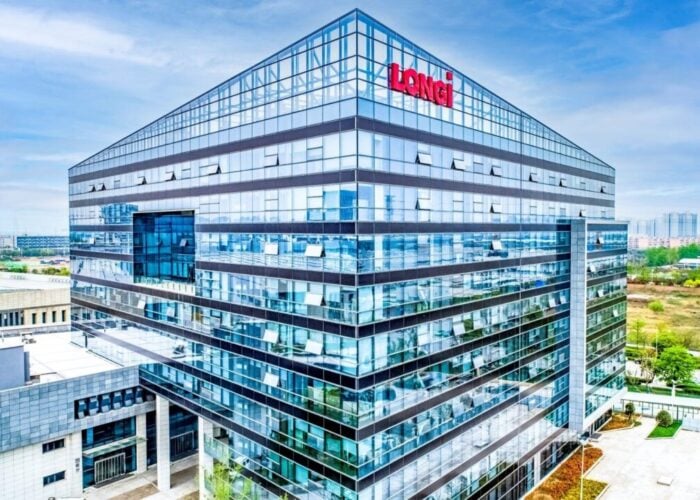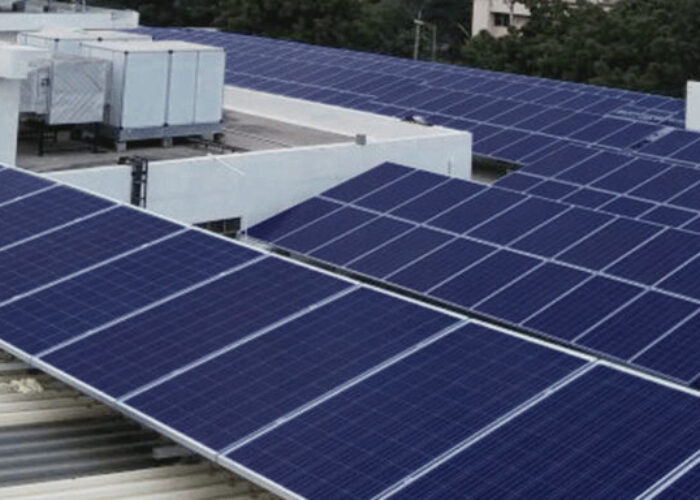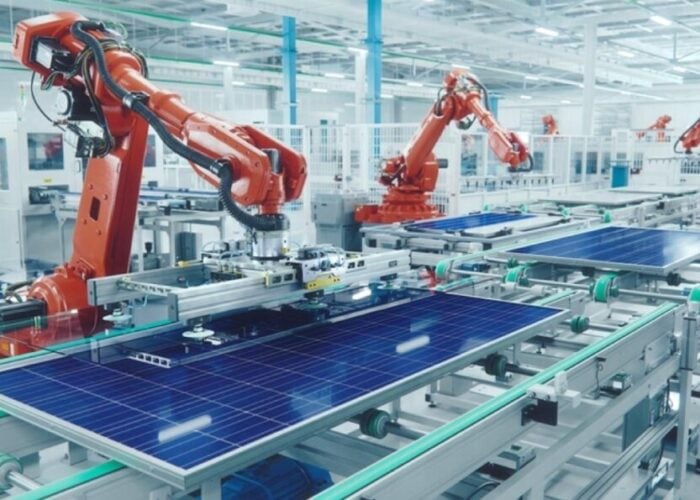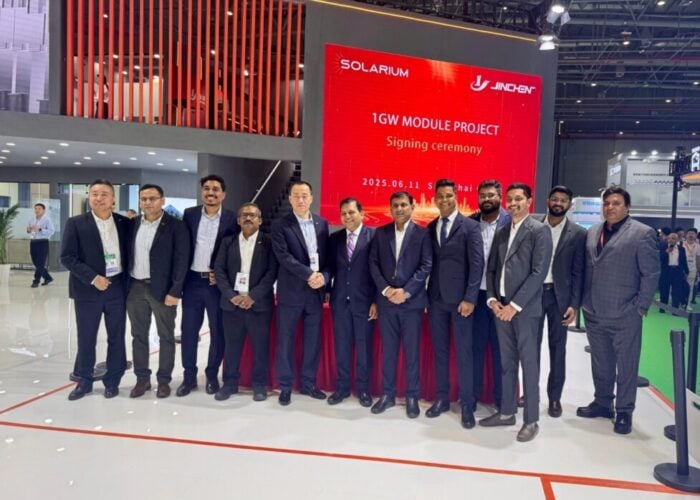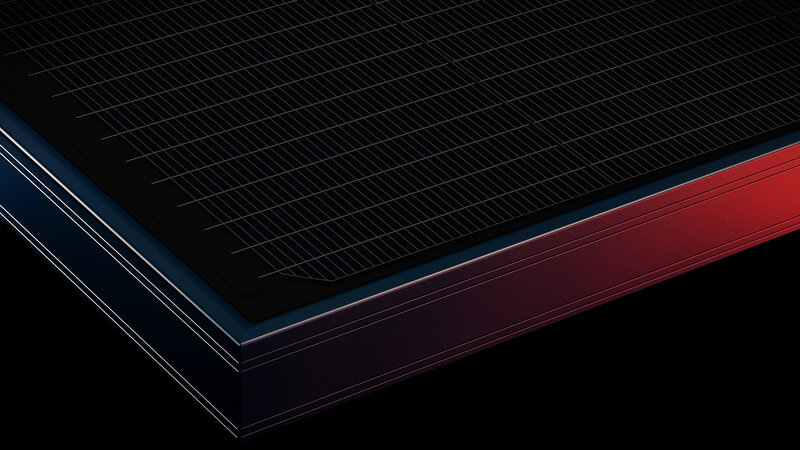
Europe’s solar technology specialists may need up to €7 billion (US$8.51 billion) in capital investment in order to scale up domestic manufacturing to be globally competitive, but continued support will be vital to sustain the industry in the long-term.
That’s according to a panel of industry leaders speaking as part of the virtual SolarPower Summit today (11 May), held by trade body SolarPower Europe.
Unlock unlimited access for 12 whole months of distinctive global analysis
Photovoltaics International is now included.
- Regular insight and analysis of the industry’s biggest developments
- In-depth interviews with the industry’s leading figures
- Unlimited digital access to the PV Tech Power journal catalogue
- Unlimited digital access to the Photovoltaics International journal catalogue
- Access to more than 1,000 technical papers
- Discounts on Solar Media’s portfolio of events, in-person and virtual
Christian Westermeier, vice president of marketing, sales and application engineering at polysilicon specialist Wacker, told panelists that there is a “unique opportunity” to build up a comprehensive manufacturing base that goes beyond solar cells and trackers, a large quantity of which are made in the EU.
“Whether they are producing wafers, ingots, cells, modules, there is a unique opportunity now to rebuild these supply chains,” he said. “We have to act fast to ramp up production capacity.”
European lawmakers have increased efforts to understand how a domestic supply chain could support the ever increasing demand for panels and components across the continent. German solar distributor and developer BayWa r.e. said it benefitted from “brisk demand” for modules during the first quarter of the year, especially from Europe, with Q1 revenues hitting €662.1 million (US$800.1 million). The company has already opened new offices in Poland and an additional warehouse in the Netherlands this spring to capitalise on rising sales. Switzerland-headquartered PV module manufacturer Meyer Burger, meanwhile, formally unveiled its new range of heterojunction (HJ) solar modules for mass production in April, and is set to open two new production facilities in Germany this month.
The European Commission last week published a revised industrial strategy which highlights the next stages the industry will need to go through to decarbonise electricity grids while energy demand continues to rise. Kerstin Jorna, director general of DG GROW, a group within the European Commission responsible for EU policy on the single market, industry, entrepreneurship and small businesses, said there will be there will be “20 times more global demand for solar panels in the future”. As it stands, she said, solar panel production in Europe is expected to double between now and 2030, and triple by 2050. The EC’s report noted that the market expansion and surging demand for solar PV is a “key opportunity” for the bloc, and it welcomes efforts to scale up solar manufacturing, such as the European Solar Initiative, launched by SolarPower Europe and independent EU-formed innovation accelerator EIT InnoEnergy earlier this year to trigger a return of the continent’s manufacturing base.
Michael Schmela, executive advisor and head of market Intelligence at trade body SolarPower Europe, highlighted the conservatism that already exists in discussions around future solar capacity. “When people look at solar, they are actually way too conservative. We’ve always seen that the sector was growing much, much faster than actually what was forecasted.” The trade association forecasts that there may be around 34GW of solar capacity across Europe in the next three years, and in order to meet the terms of the Paris Agreement, capacity would need to reach 7TW by 2050.
“It’s huge what we have to do and we have to get to completely different dimensions.”
Strengths and weaknesses
There are some areas that European-headquartered businesses have already managed to gain a sizeable share of the market in. Eduardo De San Nicolás Juárez, chief strategy officer of tracker company Soltec, said that although the US holds a 50% share of the solar tracker market, most other companies are European, “and we are in a very good position worldwide”.
Module manufacturer Meyer Burger has invested heavily in new production facilities and supplying warehouses over the past 12 months in an effort to meet the increased demand for products sparked by the continent’s new climate targets and accelerated deployment. Both of the company’s new facilities opening this year are expected to produce around 400MW of modules. Chief executive Dr Gunter Erfurt told panelists that this is, however, a “drop in the ocean” compared to what is needed to ensure Europe’s manufacturing base can compete on a global stage. “Today, as we all know, we are depending on Asia, primarily in China, up to a level of more than 90%.”
If manufacturers can continue to scale up, supported by EU policy changes, he said Europe can grow its manufacturing base to gigawatt levels that will then contribute more to deployment on the continent.
But Erfurt said it is not enough for the sector to focus on producing more cells, as all solar components are a “must”.
The sentiment was echoed by Westermeier, who said that it is not just cells and modules the sector has to look at, but also ingots and wafers, which are currently “a very crucial missing link in the supply chain where we are supplying our polysilicon to.” Currently, 95% of ingots and wafers come from China, he said, but Wacker’s current polysilicon capacity could “easily cover the entire European market, but we have to supply to China.”
“I think this, this demonstrates what kind of potential we would have in Europe to rebuild the PV supply chain, also to make sure that the European Commission and European society is finally achieving the targets we would like to have implementing the Green Deal.”
Financing the boom
Erfurt said that Europe’s solar manufacturing sector is “ready” to reclaim market share because, although the vast majority of modules are shipped from China right now, “we have never lost the technical leadership”. The European Commission, he said, has helped to support continued research and development within the industry to establish more efficient technologies, but companies need further investment to bring their innovations to commercial scale. He suggested that, if Europe could reach a module manufacturing capacity of 20GW “we would seek about €5 to €6 billion” of capital investment. Westermeier said that figure is likely closer to €7 billion to build up a supply chain to that size, but “what you also have to look into afterwards is of course, to keep that running and competitive.” Operational expenditures in rival markets in Asia, he said, are supported as some “provide very attractive frame conditions to their companies to survive in this fierce global competition.” Jorna added that the European Commission in reviewing state aid guidelines to help not only scale up solar manufacturing, but ensure it is sustainable in the future. “We are certainly concerned about a level playing field, “ she said.
Soltec chief Juárez, however, added that ESG investment from corporations, utilities and banks and funds looking into “greening their pipelines” could help to sustain business growth, but this relies on companies like Soltec, which rely heavily on sourcing steel, to be able to demonstrate a low-emissions supply chain themselves. One question Juárez said the company faces often is whether they have a key performance indicator to measure the climate impact of steel production within their own operations.
“It’s not only about producing, it’s also about producing in a sustainable way.”

